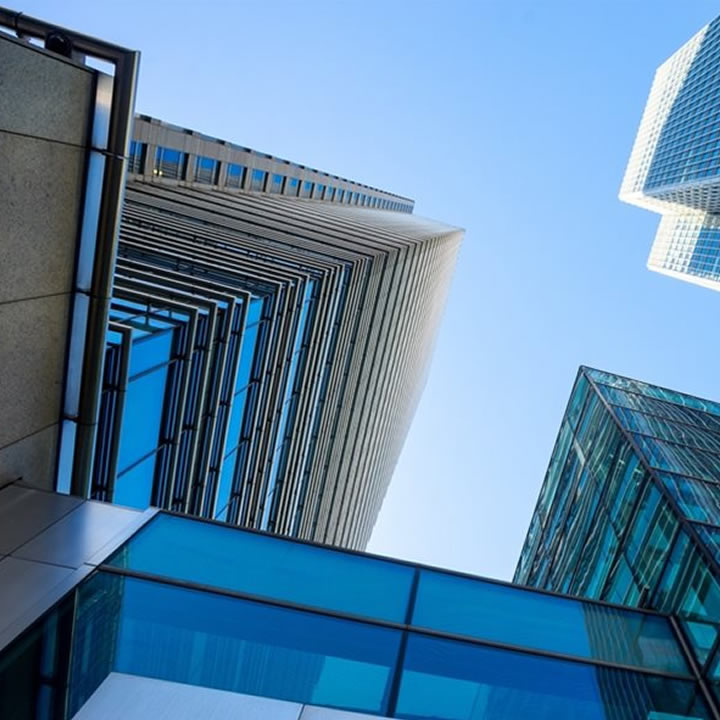One often has to wonder in a high-rise building how one might escape in an emergency.
In most cases, the use of elevators is a necessity, and high-rise buildings typically have 13 or more floors.
Even so, a common fire safety rule is to avoid elevators entirely, but for someone in a high-rise building having to use stairs can be quite dangerous and can take a long time, putting the person at risk. So, how is fire safety handled in those cases?
High-rise buildings and skyscrapers are a common sight now in large cities. Fire safety laws and regulations, however, are still trying to catch up to these behemoths. In this content piece, we will take a look at how fire safety practices are handled in these high-rises.
Design is a Critical Component
Industrial complexity has had a significant impact on the fire safety of buildings.
Modern buildings often have a variety of complex systems and components, such as electrical and mechanical systems, that can contribute to the spread of fire. The use of new materials and construction techniques, as well as the increasing size and height of buildings, can also present unique fire safety challenges.
For example, high-rise buildings often have multiple levels and interconnected spaces, which can make it more difficult for firefighters to access and contain a fire. The use of synthetic materials, such as plastics and foam, can also release toxic smoke and contribute to the spread of fire while also making the air toxic in addition to the fumes and smoke.
Additionally, industrial complexity can make it more challenging to evacuate buildings during such an emergency. The use of sophisticated security systems, such as card access and video surveillance, can also slow down the evacuation process and increase the risk to building occupants.
Proactive Fire Reduction Techniques
It’s important for building owners, designers, and construction professionals to be aware of these risks and to incorporate fire safety measures into their designs and construction plans. This can include installing fire alarms and sprinkler systems, providing fire-resistant materials and construction techniques, and planning for safe evacuation in case of an emergency.
One way to combat the spread of fire is to section off parts of these buildings so that a few floors would be separate units from the ones above or below them. It is a segmentation process designed to prevent a building’s inner plumbing, electric wires, and other elements to cause a cascading effect.
By segmenting into sections, it can contain the spread to a single unit of the building instead of the entirety of it.
Common Fire Safety Techniques for High-Rises
Fire safety and awareness are critical in high-rise buildings as they pose unique challenges and dangers compared to other structures. Here are some important considerations:
Fire alarms and sprinkler systems: Most high-rise buildings are required to have fire alarms and sprinkler systems installed to help alert residents and suppress fires. It’s important to ensure these systems are regularly maintained and tested.
Evacuation plans: High-rise buildings need to have well-defined evacuation plans that are communicated to all residents and employees. This should include clear instructions on how to evacuate the building, where to gather, and who to contact in case of an emergency.
Stairwells: Stairwells are a primary means of escape in high-rise buildings and must be kept clear at all times. They should be well-lit and have fire doors that close automatically to help slow the spread of smoke and fire.
Cooking safety: Cooking is a leading cause of fires in homes, and high-rise buildings are no exception. Residents should be careful when cooking, avoid leaving food unattended on the stove, and use fire-safe appliances.
Smoking safety: Smoking should only be done in designated smoking areas, and cigarettes should be extinguished properly to prevent fires.
Electrical safety: Electrical equipment and wiring should be properly maintained and checked regularly to reduce the risk of fire. Residents should also avoid overloading outlets and use frayed or damaged electrical cords.
Regular fire drills: Regular fire drills are an important way to ensure that residents and employees are prepared in case of an emergency. Moreover, fire awareness training sessions can help ensure everyone knows what to do in the event of a fire.
These fire safety elements are similar to any other building, but for high-rises, they can be even more crucial. As mentioned, the legislation is still struggling to catch up to the industrial complexity, building architecture, design, and other aspects.
A fire in a UK high-rise building in 2017 occurred exactly due to these complications in addition to negligence, and the legislation to deal with such situations was only implemented in January 2023.
Conclusion
Fire safety for high-rise buildings is getting increasingly complicated.
However, most of it can be attributed due to design complexity. Here, we have outlined a few of these techniques, the complications in fire safety, and how the law is still catching up to these new developments.

